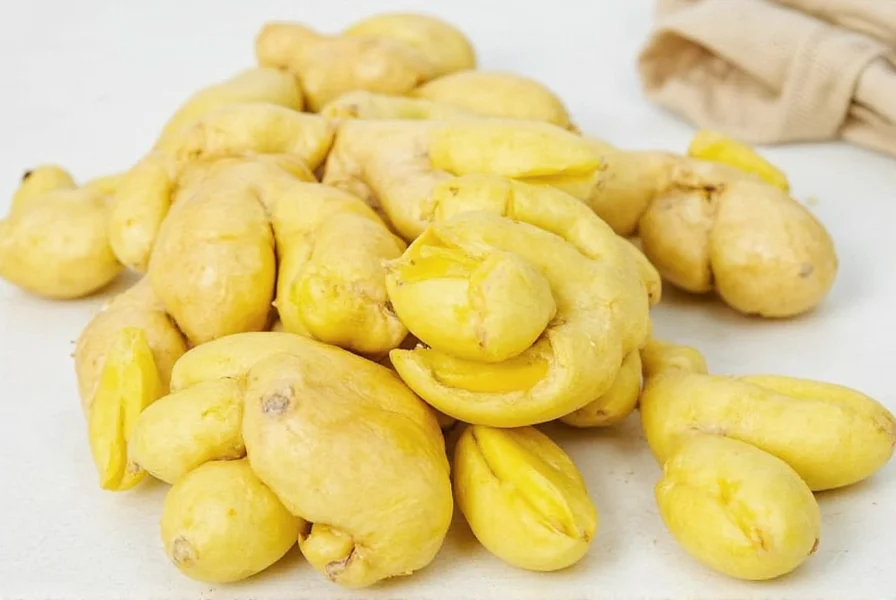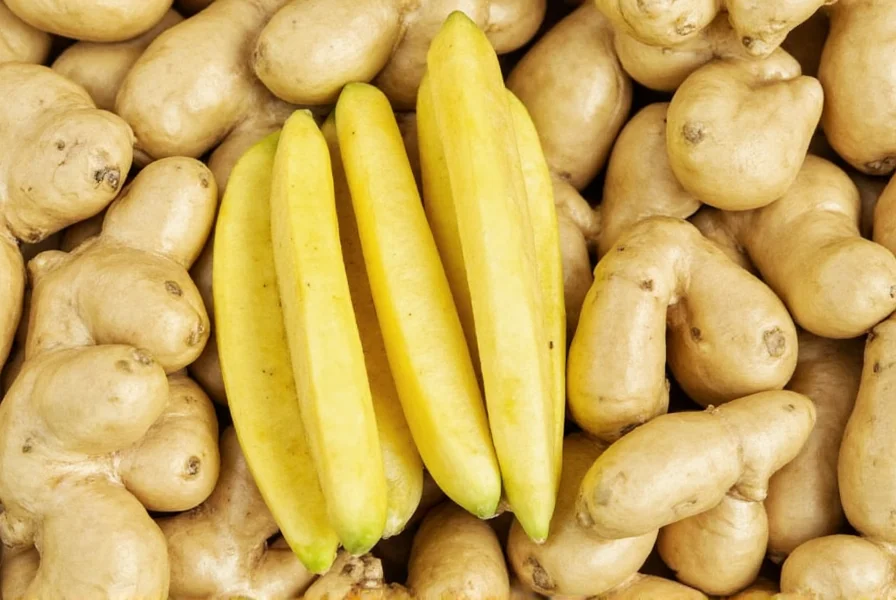Proper ginger storage preserves its pungent flavor, firm texture, and valuable nutrients. Whether you've bought a large root at the market or have leftovers from a recipe, understanding the science behind ginger preservation helps you avoid waste while maintaining quality. This comprehensive guide covers evidence-based storage methods backed by food science principles.
Understanding Ginger's Natural Properties
Ginger root (Zingiber officinale) contains high moisture content and natural oils that make it susceptible to spoilage. The rhizome's protective skin helps retain moisture, but once damaged or peeled, degradation accelerates. Temperature, humidity, and exposure to air significantly impact shelf life. Unlike many root vegetables, ginger requires specific conditions to maintain optimal freshness.
Refrigeration Methods for Fresh Ginger
Refrigeration slows enzymatic activity that causes ginger to deteriorate. The ideal temperature range for ginger storage is 32-40°F (0-4°C) with high humidity (85-90%). Here's how to maximize refrigerator storage:
| Storage Method | Preparation | Expected Shelf Life | Best For |
|---|---|---|---|
| Whole unpeeled | Wrap in paper towel, place in airtight container | 3-4 weeks | Most versatile method |
| Cut pieces | Place in small jar with 1 tsp water, cover tightly | 1-2 weeks | Partial roots |
| Vacuum sealed | Seal with minimal air exposure | 4-5 weeks | Maximizing shelf life |
When storing ginger in the refrigerator, always keep it in the crisper drawer where humidity is higher. The paper towel absorbs excess moisture that would otherwise promote mold growth. Check weekly and replace the paper towel if damp. Never wash ginger before storage as excess water accelerates spoilage.

Freezing Ginger for Long-Term Preservation
Freezing is the most effective method for preserving ginger's quality beyond one month. Unlike many vegetables, ginger freezes exceptionally well due to its fibrous structure and oil content. Two recommended approaches:
- Whole root freezing: Place unpeeled ginger in a freezer bag, removing as much air as possible. When needed, grate frozen ginger directly into dishes without thawing.
- Sliced freezing: Peel and slice ginger into 1/4-inch pieces, arrange on parchment paper, freeze solid, then transfer to airtight container. This portion-controlled method works well for tea or cooking.
Properly frozen ginger maintains quality for 4-6 months. The freezing process actually makes ginger easier to grate and releases more flavor compounds. Never thaw frozen ginger before use, as this creates excess moisture that degrades texture.
Alternative Storage Techniques
While refrigeration and freezing are optimal, these alternative methods work in specific situations:
- Vinegar preservation: Submerge peeled ginger slices in rice vinegar in a sealed jar. This creates "gari" style ginger that lasts 3-4 weeks and works well for sushi or salads.
- Water storage: Place unpeeled ginger in a jar covered with cold water, changing water every 2 days. Suitable for 1-2 weeks of storage but increases mold risk.
- Dry storage: Only appropriate for completely dry, hardened ginger in cool, dark places for up to 1 week.
Identifying Spoiled Ginger
Knowing when ginger has spoiled prevents food waste and potential illness. Discard ginger showing any of these signs:
- Mold growth (white, green, or black spots)
- Soft, mushy texture when pressed
- Darker yellow or grayish color inside
- Sour or unpleasant odor
- Excessive wrinkling beyond normal drying
Sprouting ginger remains safe to eat if firm and not moldy—simply cut off sprouts before use. Slightly wrinkled ginger can often be revived by soaking in cold water for 30 minutes.
Common Ginger Storage Mistakes
Avoid these frequent errors that shorten ginger's shelf life:
- Storing at room temperature for more than 3-4 days
- Washing ginger before storage
- Using plastic bags without moisture control
- Storing near ethylene-producing fruits like apples or bananas
- Peeling ginger before long-term storage
For best results, always store ginger separate from strong-smelling foods as it readily absorbs odors. The refrigerator's vegetable drawer provides ideal conditions when properly prepared.
Maximizing Ginger's Flavor and Nutritional Value
Proper storage preserves not just appearance but also gingerol content—the compound responsible for ginger's health benefits and distinctive flavor. Research shows frozen ginger maintains higher gingerol levels than refrigerated ginger after three weeks. For maximum potency in medicinal applications, frozen grated ginger provides the most consistent results.

Frequently Asked Questions
Can you store fresh ginger in the pantry?
Short-term pantry storage (3-4 days) works only in cool, dark places below 70°F (21°C). Ginger stored at room temperature dries out quickly and develops mold within a week. For anything beyond immediate use, refrigeration or freezing is strongly recommended to maintain quality and prevent spoilage.
How do you keep ginger from molding in the refrigerator?
Prevent mold by wrapping ginger in a dry paper towel before placing it in an airtight container. The paper towel absorbs excess moisture while the container maintains humidity. Check and replace the paper towel weekly. Never store ginger in sealed plastic bags without moisture control, as trapped humidity encourages mold growth.
Is it better to freeze ginger whole or sliced?
Freezing whole preserves maximum freshness for longer storage (up to 6 months), while sliced portions offer convenience for regular use. Whole frozen ginger maintains quality better but requires grating directly from frozen. Sliced ginger works well for tea or measured cooking portions but has slightly reduced shelf life (4-5 months). Both methods outperform refrigeration for long-term storage.
Can you store peeled ginger in water?
Submerging peeled ginger in water works for short-term storage (3-5 days) but increases spoilage risk. Change the water daily and use within 5 days. This method works best for immediate cooking needs but isn't recommended for preservation. Unpeeled ginger stored dry in the refrigerator lasts significantly longer while maintaining better texture and flavor.










 浙公网安备
33010002000092号
浙公网安备
33010002000092号 浙B2-20120091-4
浙B2-20120091-4